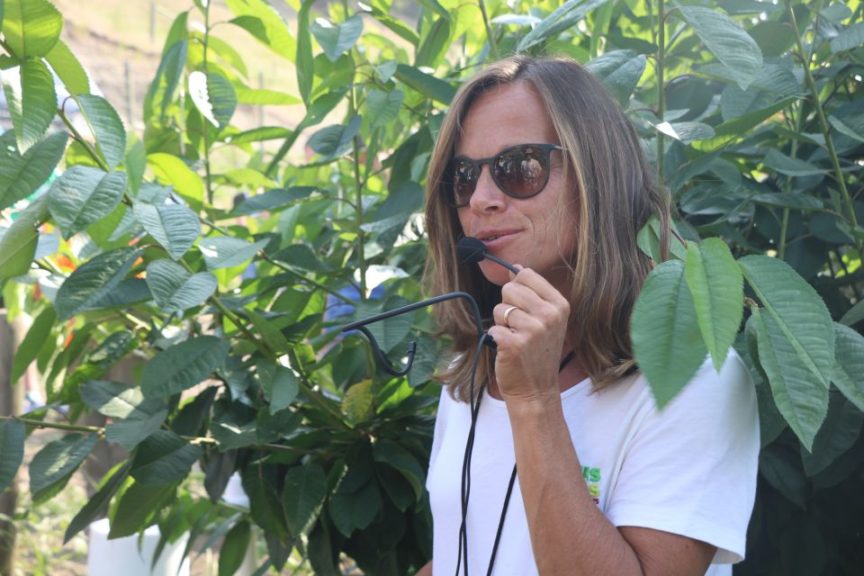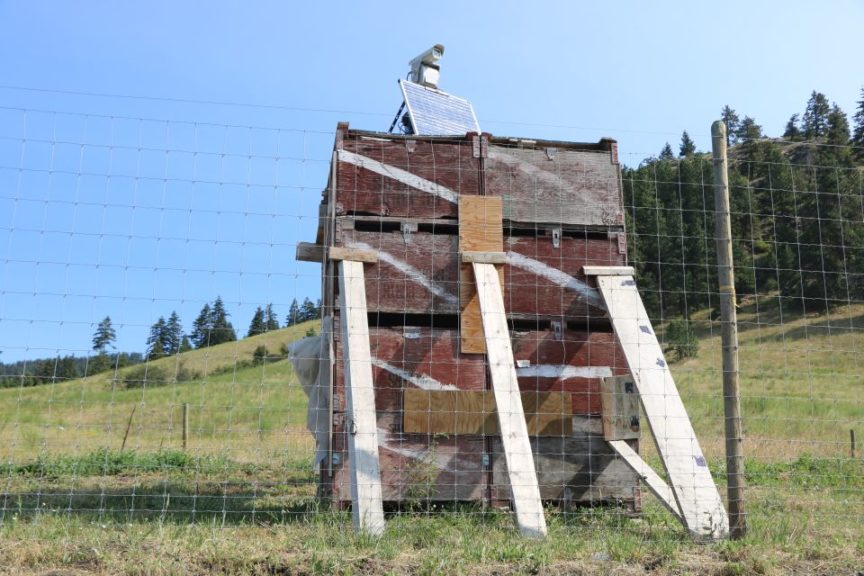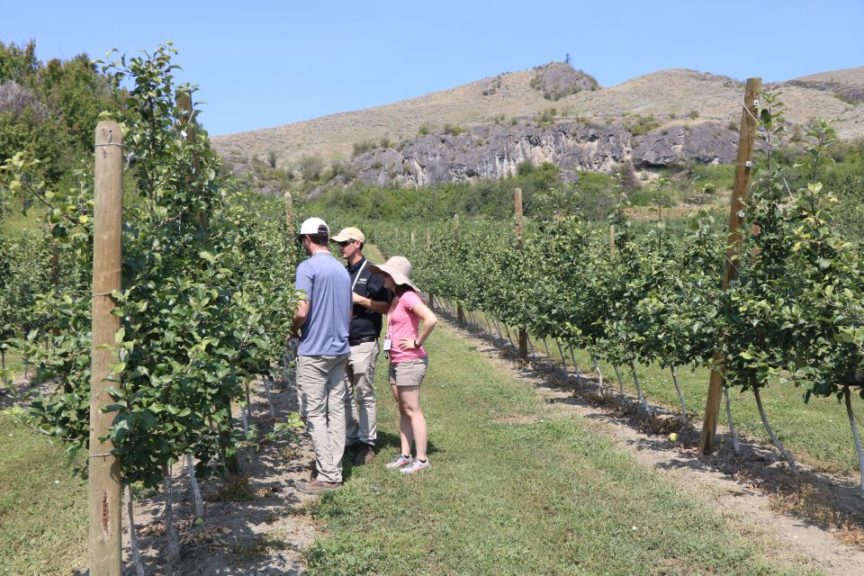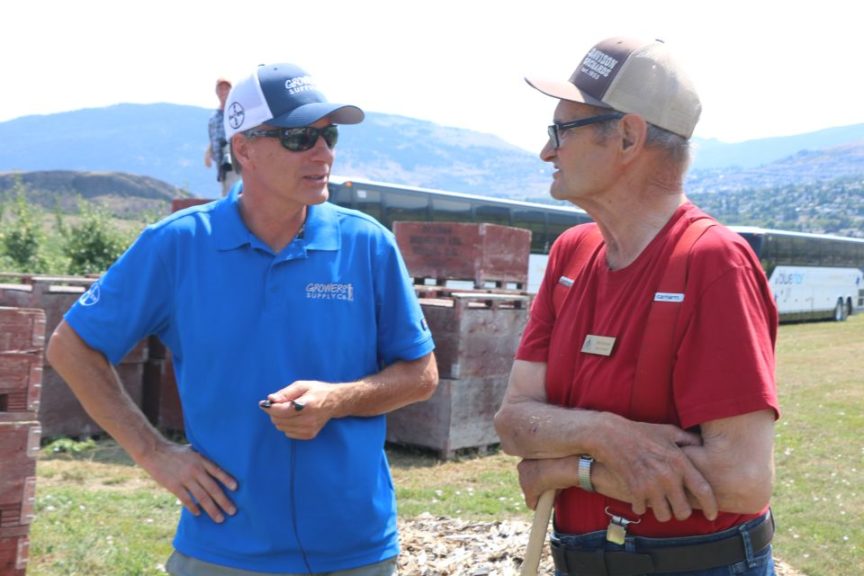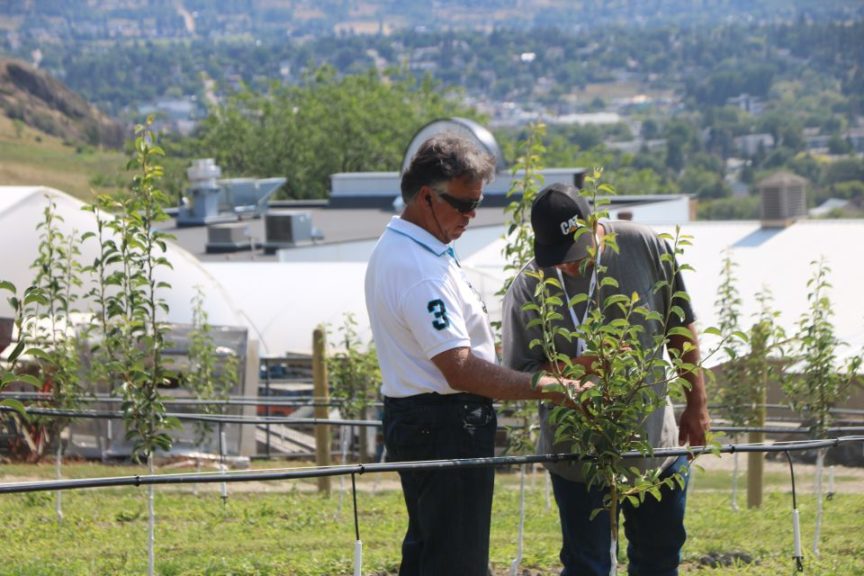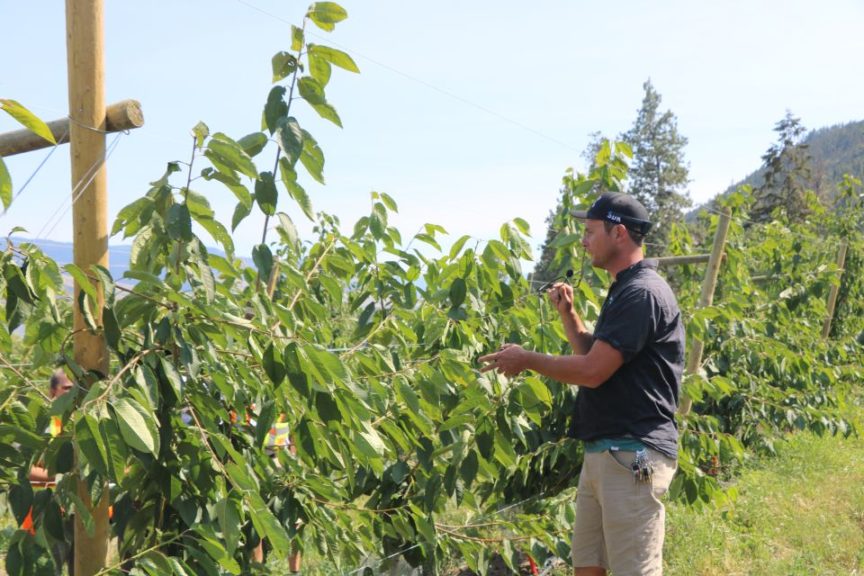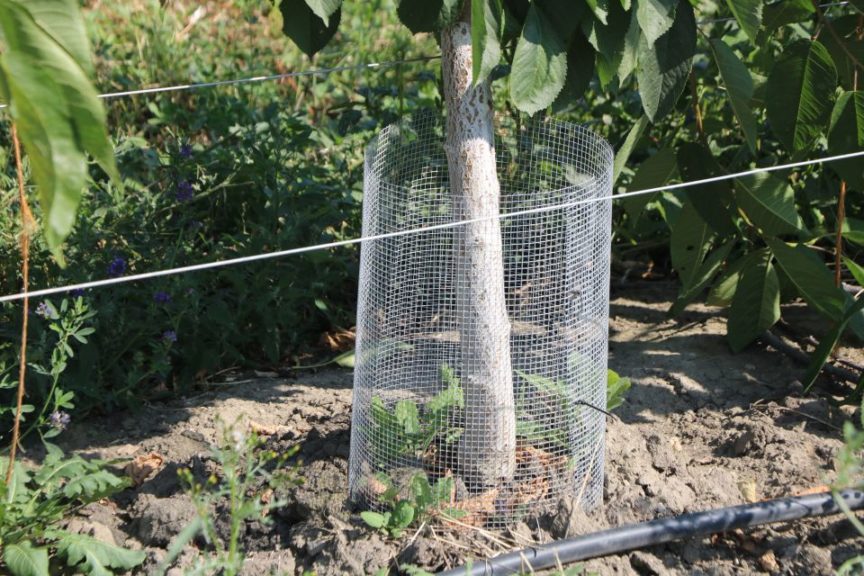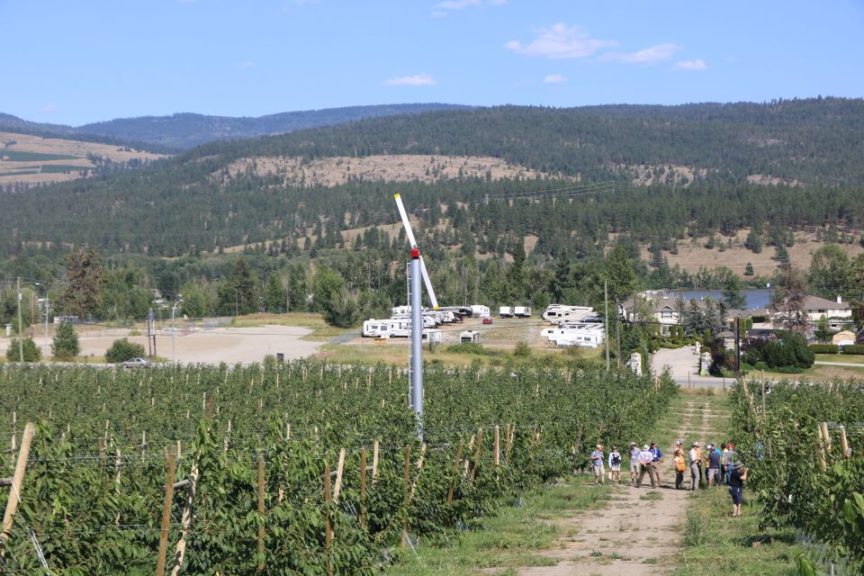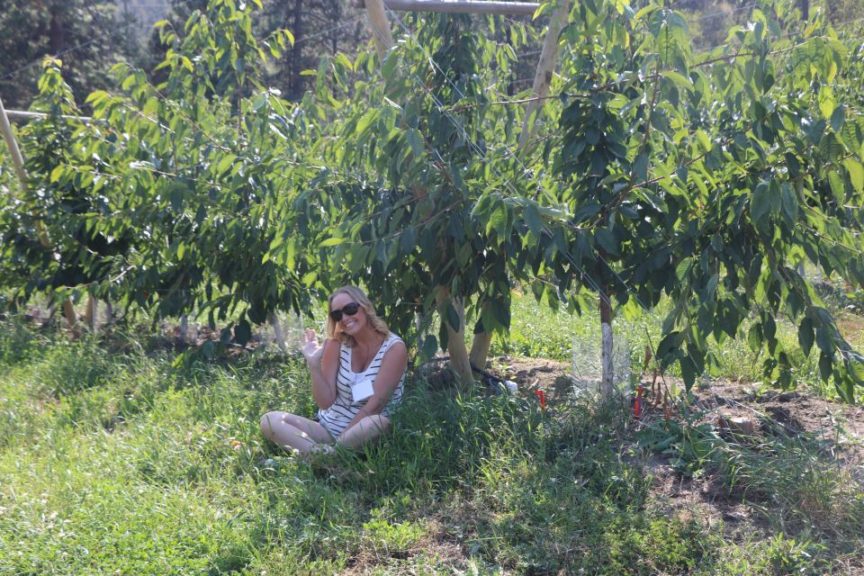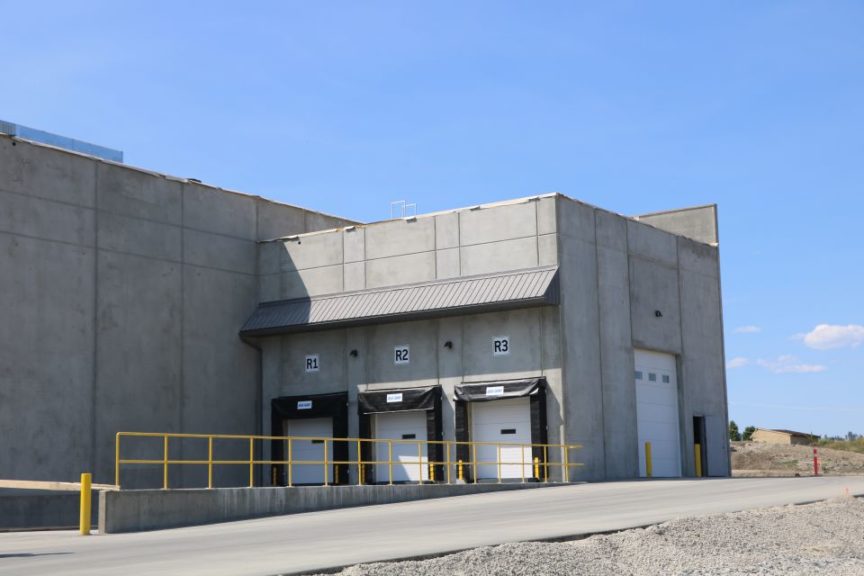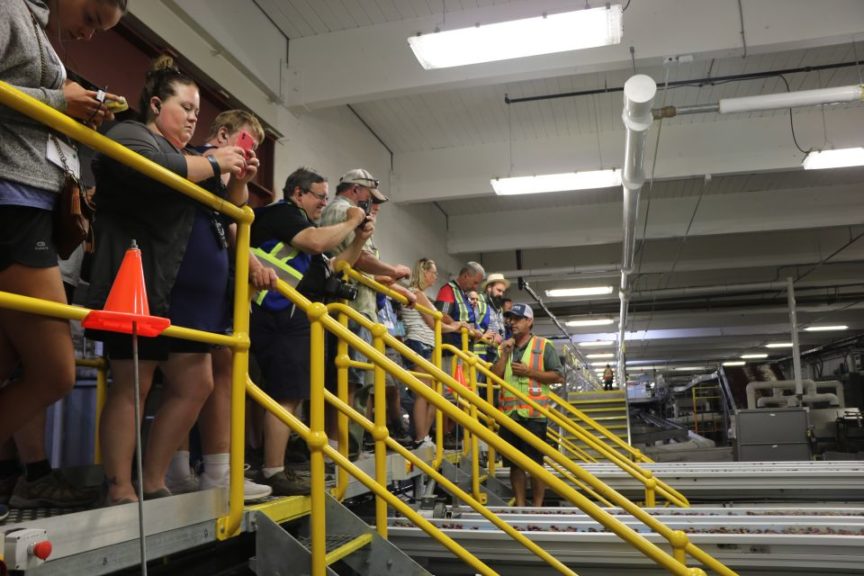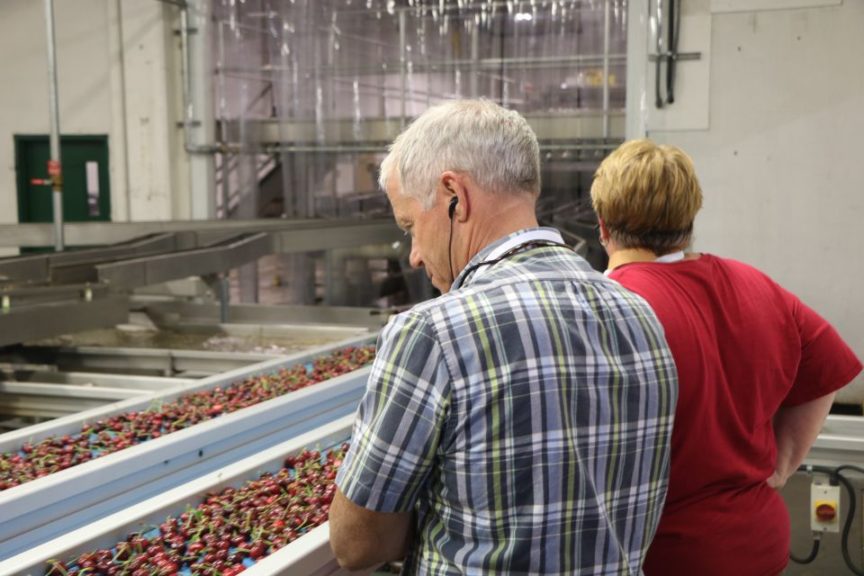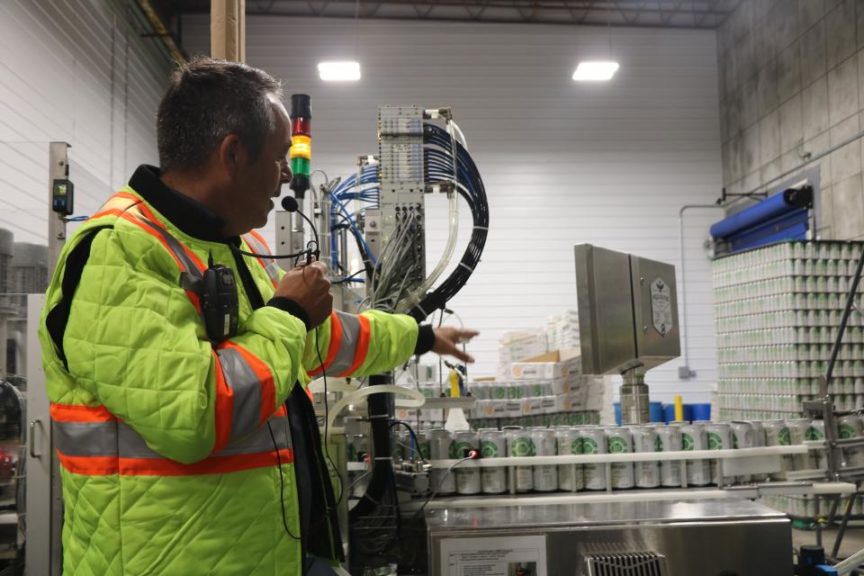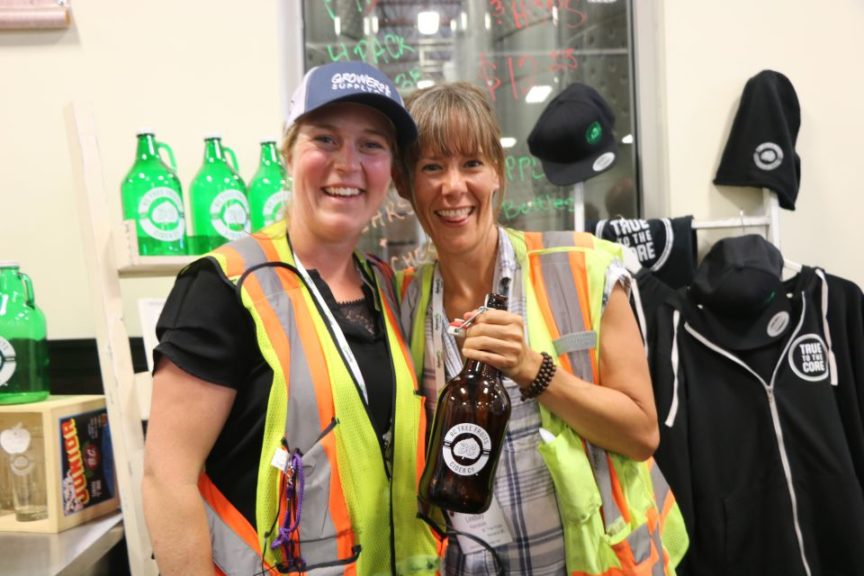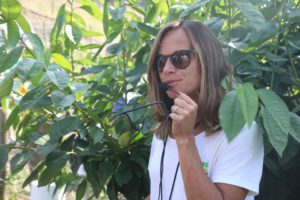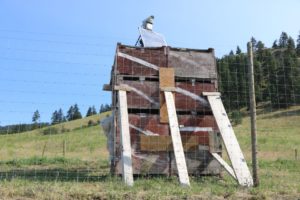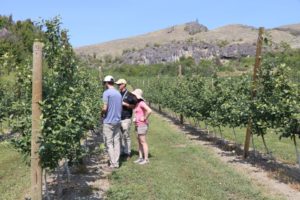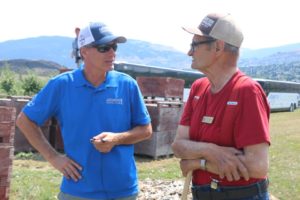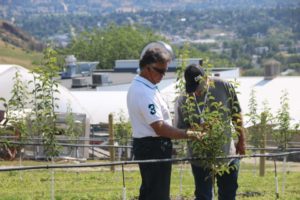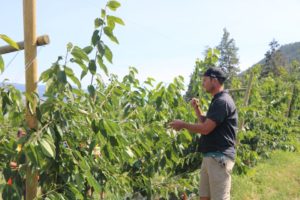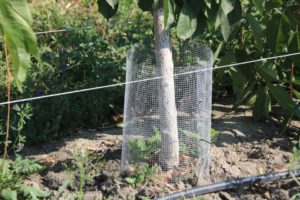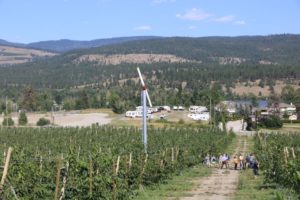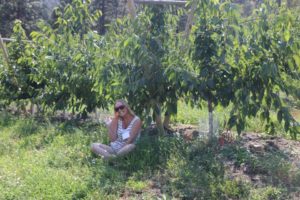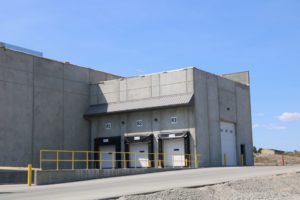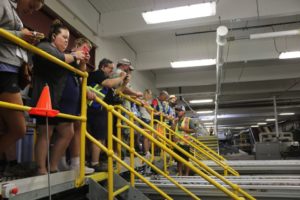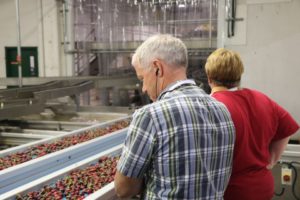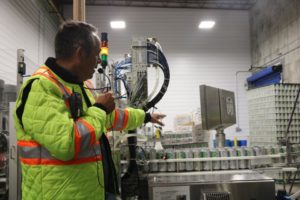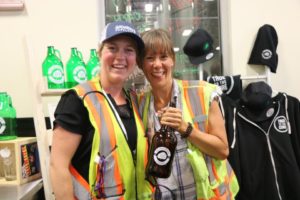How an Ambitious Cherry Grower Chases Late-Season Returns
To call Coral Beach Farms Ltd. owner David Geen ambitious is a bit of an understatement. Geen not only plans to double his producing acres in three years, but he also eyes the high returns of late cherry varieties by planting in higher altitudes. For those on the second-day cherry tour of International Fruit Tree Association’s summer tour in British Columbia, growers got to see a 65-acre planting east of Winfield at 2,200 feet.
“Dave tends to favor the late season varieties for good returns,” says Gayle Krahn, Horticulture Manager of Coral Beach Farms Ltd.
Currently, the farm has about 700 producing acres, and Geen, a fourth-generation orchardist, purchased about 800 acres to add a second cherry packing facility in Coldstream, BC, and double the operations total acreage. One hundred acres were planted in 2017 and about 20 planted this spring. The operation hopes to plant 280 the next two years.
Another plot of land in Prichard, BC, that the team is affectionately calling “Layer Cake” due to its soil, is the most Northerly growing area for Coral Beach. This location boasts good air circulation, excellent drainage, is close to the South Thompson River, and a location with heights of 2,600 feet in elevation.
The Coldstream and Layer Cake plantings will bring Coral Beach’s total acreage close to 1,000 by 2021.
When asked about plantings in even higher elevations than Layer Cake’s 98 acres at 2,600 feet, Craig Dalgliesh, Orchard Manager for Coral Beach Farms, hesitated.
“We’ve had a few challenges with that one, so I don’t know if we’re brave enough to go higher,” he says.
Dalgliesh says with the snow cover, crews can’t get into the orchard until late April, which is the tradeoff for eyeing later harvests. Layer Cake is about 80% ‘Stacatto’ and 10% of ‘Sweetheart’ and ‘Sovereign’ on Mazzard rootstocks.
Krahn says the Winfield planting is designed to “take advantage of the late season” with varieties such as ‘Regina,’ ‘Stacatto,’ ‘Skeena,’ ‘Cristalina,’ ‘Kordia,’ and ‘Suite Note,’
“This particular orchard has good potential,” she says of Winfield.
This year, the vigor was quite evident.
“These are pretty vigorous,” she says. “I think I put too much nitrogen on this year.”
Krahn says next year she’ll back of the nitrogen applications and go heavy with winter pruning on the tops to slow down the vigor. In fact, the teams at Coral Beach Farms start pruning directly after harvest just to cover all the acres planted.
“We have no choice,” she says.
Teams prune out big wood and tops.
The goal is to aim for about 8 to 10 tons per acre.
They’re experimenting with 12 acres of ‘Skeena’ under Voen covers at the operation’s Coldstream site. Krahn acknowledges the covers protect against cracking, but do create more humidity under cover, which could cause softness or mildews.
While at the Coldstream planting, tour attendees got a chance to view Dalgliesh’s V-trellis system for 15 acres of ‘Regina’ cherries on Gisela 6 rootstock. The trees are tipped in alternate directions every other tree. Dalgliesh says this helps open the centers of the trees to create a “light tunnel.” With this system, the planting density is about 700 trees per acre and trees are about 3 to 4 feet apart with rows about 15 feet wide. Dalgliesh says the system is 270° system.
“It becomes quite a tunnel,” when the system grows out and he’d consider extending the row length another foot.
However, this V-trellis angled planting is just endemic of ‘Regina.’ Dalgliesh says he noticed when planting ‘Regina’ in a straight central leader, the “trees were getting leany,” so this V-trellis followed the variety’s natural inclination.
“I wouldn’t say we get a huge lift in tree productivity,” Dalgliesh says.
However, he says the benefits come in the form of better light and spray penetration and less picker fatigue.
“They’re not trying to fight through the tree,” he says.
Pickers aren’t necessarily fans of the system in the beginning. But, Dalgliesh says each picker has a buddy on the other side of the row so each picker is picking every other tree.
Renewal is the name of the game with Dalgliesh, especially in the V-trellis ‘Regina’ block. His pruning philosophy in young plantings is to prune back the bottoms after the first cropping year, middle part of the tree after the second cropping year, and the tops after the end of the third cropping year.
“The ticket for us is before the canopy develops, we’re renewing bottoms,” he says. “Don’t be afraid to lose fruiting surface because it’s hard to get productivity in the bottom.”
Tipping happens in the fourth leaf.
“Some of our best fruiting in ‘Regina’ is coming off of basal buds,” he says. “It doesn’t always look pretty, but we don’t sell trees.”





